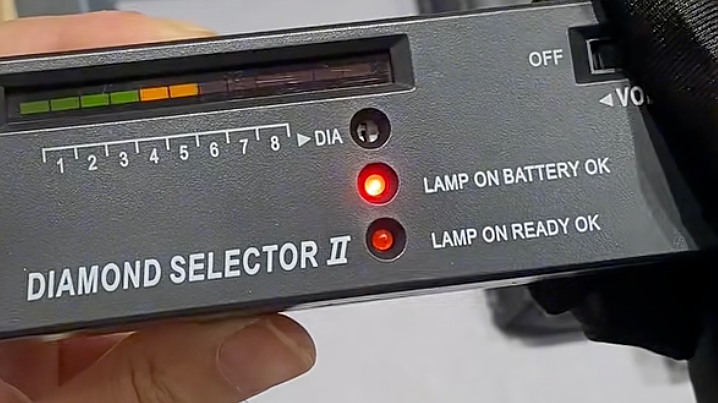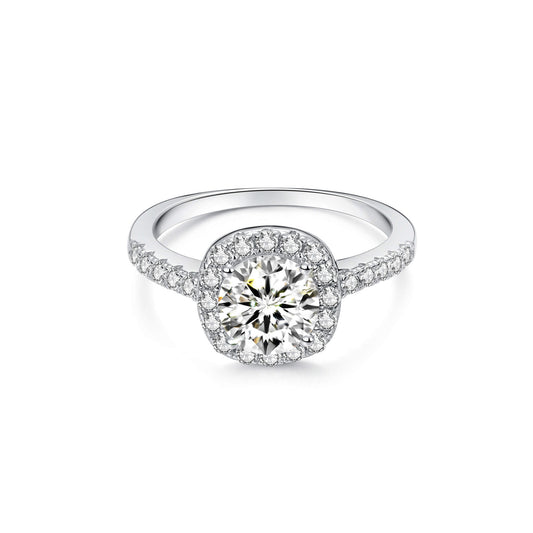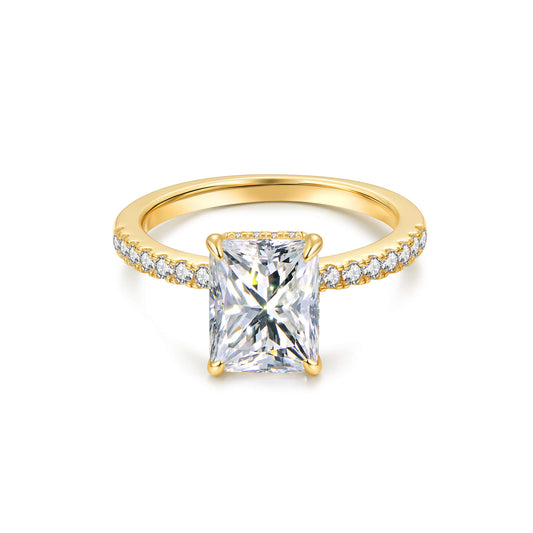Do Lab Grown Diamonds Pass Diamond Tester Checks?
For anyone shopping for a diamond today, there's one question that keeps popping up:
Do lab grown diamonds pass diamond tester evaluations the same way mined diamonds do?
With the rise of ethical, sustainable, and more affordable alternatives to natural diamonds, it's no wonder lab-grown options are turning heads. But for all their visual brilliance and chemical perfection, people still wonder...
Will they test as REAL diamonds?
Let’s break it all down using research, lab science, and what diamond testers actually detect.
Lab grown vs. natural diamonds: are they really the same?
Lab grown diamonds aren’t just a cheaper alternative. They’re chemically, physically, and optically identical to natural diamonds.
They're made from pure crystallized carbon, arranged in the same tight lattice structure that gives a mined diamond its legendary hardness and sparkle.
The only real difference?
One takes billions of years to form beneath the Earth’s crust. The other takes a few weeks in a lab using advanced technology like HPHT (High Pressure High Temperature) or CVD (Chemical Vapor Deposition).
And get this…even trained jewelers can’t tell them apart without using specialized equipment.
Additionally, according to the Gemological Institute of America (GIA), lab-grown diamonds score a perfect 10 on the Mohs hardness scale, the same as natural diamonds.
So…how do they hold up when tested?
How do diamond testers work?
A diamond tester isn’t some magic machine that can detect how your stone was made. Instead, it works by analyzing how a gemstone conducts heat or electricity.
There are two main types:
-
Thermal conductivity testers: These measure how quickly heat travels through a stone. Diamonds, natural or lab-made, are exceptional conductors of heat. So when touched with the probe, real diamonds instantly pull heat away, triggering a “diamond” reading on the device.
-
Electrical conductivity testers: These are used to differentiate between diamonds and certain simulants like moissanite, which conducts electricity, while most diamonds do not.
THE SHORT ANSWER: Because lab grown diamonds conduct heat in the same way as mined ones, they will pass a standard diamond tester.
But here's where things get interesting...
Why some testers might say a lab diamond is fake
While most modern diamond testers recognize lab-grown stones as real diamonds, some older or combination testers may throw off a false reading. Here’s why:
HPHT-grown diamonds (especially older ones) may contain trace elements like boron.
This can affect electrical conductivity, potentially triggering a “moissanite” or “simulant” reading if the device isn't calibrated to account for those inclusions.
Some low-quality testers look for nitrogen (which most natural diamonds contain). Since many lab-grown diamonds are nitrogen free, these testers might not give a definitive result.
But this doesn’t mean the stone is fake, it just means you need better equipment.
For accurate verification, jewelers rely on certifications from GIA or IGI, or specialized tools like DiamondView, which can distinguish growth patterns visible only under UV light.
Still, when it comes to basic authenticity?
Yes, lab grown diamonds will pass a diamond tester 99% of the time, especially if it’s thermal based.
The problem with diamond simulants
A lot of people confuse lab-grown diamonds with simulants like cubic zirconia or moissanite, but they’re not the same thing.
Simulants only look like diamonds. They're made from completely different materials and don’t have the same chemical or optical properties.
Because of this, they typically fail diamond tester checks, especially the ones using thermal conductivity.
Moissanite, though, is a special case, it can sometimes fool testers because it also conducts heat well.
That’s why jewelers use dual testers that also measure electrical conductivity to separate moissanite from the real thing.
So no, a lab diamond isn’t just another simulant, it’s the real deal, chemically and structurally.
Can a diamond tester tell if it's lab grown or mined?
Here’s where things get a little tricky.
Lab grown diamonds pass diamond tester checks because the tools are designed to test for authenticity, not origin.
A diamond tester can tell you whether the stone is a diamond or not, based on how it conducts heat or electricity.
What it can’t tell you is how that diamond was formed.
So, if someone tries to use a handheld diamond tester to figure out whether a stone is lab grown or mined, they’ll basically be guessing. Both types will trigger a “diamond” reading, because they both are diamonds.
This is why gemological labs use more advanced equipment to uncover a diamond’s origin story.
How experts tell the difference
When gemologists need to determine whether a diamond was grown in a lab or formed naturally in the earth, they use a combination of lab only tools and highly in depth observation.
Some of the specialized tools used in professional labs include:
-
UV fluorescence imaging is used to examine the internal growth patterns of a diamond, which are straight in natural diamonds and often curved in lab grown stones.
-
DiamondView machines expose diamonds to ultraviolet light to analyze fluorescence behavior and growth lines, revealing subtle visual differences that can’t be seen with the naked eye.
-
Spectroscopy equipment is used to identify trace elements within the diamond, such as boron or nickel, which are sometimes present in lab diamonds depending on the manufacturing method.
-
Phosphorescence testing helps identify whether the diamond glows after the UV light is removed, this lingering glow is more common in lab diamonds, especially those created via HPHT.
All of these tools require lab access and trained professionals to interpret the data correctly. This is why most consumers rely on certification documents to confirm origin rather than trying to analyze the stone themselves.
Why certification is everything
Since diamond testers only confirm that a stone is a diamond, not how it was made, certification is the only reliable way to verify origin.
Certification from a respected gemological lab ensures the diamond has been properly examined and graded, giving you clarity on its characteristics and authenticity.
The most widely accepted diamond certification labs include:
The Gemological Institute of America (GIA), which offers detailed grading reports on both natural and lab grown diamonds.
The International Gemological Institute (IGI), known for its lab diamond expertise and clear documentation of HPHT vs. CVD processes.
These certificates typically include key information such as:
-
The diamond’s carat weight, cut, color, and clarity grades.
-
Notes on whether the diamond was lab grown or mined, and what growth process was used.
-
Descriptions of inclusions, fluorescence, and other identifiers tied to the diamond’s formation.
If a jeweler can’t provide certification, it’s impossible to know for sure where the diamond came from, regardless of how it performs on a diamond tester.
Even though lab grown diamonds pass diamond tester checks, certification tells the whole story.
What about resale value? This is where lab diamonds differ most from their mined counterparts.
This is where lab diamonds differ most from their mined counterparts.
While they test the same, wear the same, and sparkle just as beautifully, their resale market is still evolving.
Because lab grown diamonds can be created more efficiently and in higher volume, they don’t have that same “scarcity” value as natural diamonds. That means their resale prices tend to be lower.
However, for most buyers, a diamond is not an investment, it’s a personal or symbolic purchase.
And in that case, lab grown diamonds offer exceptional value: you get a bigger, higher quality stone for less money, and with a much smaller environmental footprint.
Plus, as more major retailers and designers embrace lab grown diamonds, the demand is growing, and so is resale infrastructure.
Final thoughts: Do lab grown diamonds pass diamond tester tools?
Yes. Lab grown diamonds pass standard diamond testers, especially those that measure thermal conductivity.
They behave exactly like mined diamonds in these tests because they share the same fundamental composition, crystallized carbon.
In rare cases, HPHT diamonds may show electrical conductivity due to trace boron, which can confuse certain dual-mode testers. But this doesn’t mean the stone isn’t real. It just means the tester isn’t equipped to interpret those nuances.
If you want to know for sure whether a diamond is lab grown or natural, rely on a grading certificate from a trusted gem lab, not just a handheld tester.
And if you want to shop our line of lab grown diamond engagement rings, just click here to view our most popular designs.











